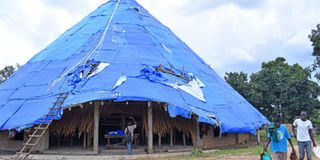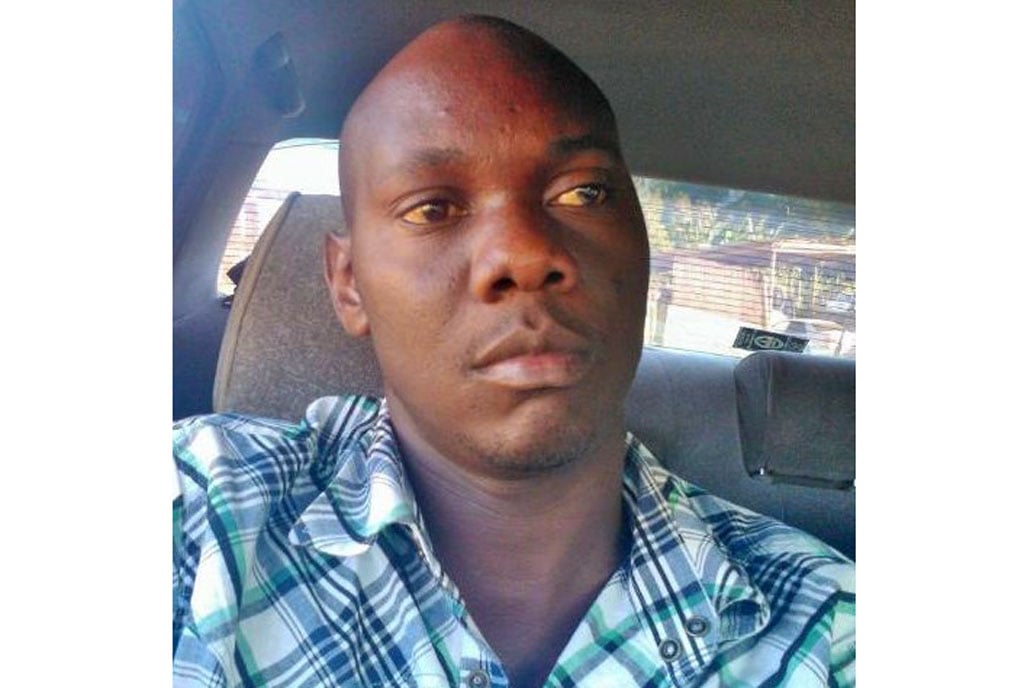Prime
How US fallout with Mengo froze Kasubi Tombs funds

Site. People move past Kasubi Tombs that is still under construction on August 30, 2019. Lack of accountability is reported to have forced the US Embassy to demand a refund of money they had donated for the reconstruction process. PHOTO BY MICHAEL KAKUMIRIZI
What you need to know:
- In November 2019, Katikkiro Charles Peter Mayiga said Shs6b had been used. Government contributed Shs2.3b. Another Shs4b was raised by the kingdom. The perimetre wall was constructed at Shs2.5b and other works took the rest of the money.
- The kingdom said the Japanese government will channel $500,000 (about Shs1.8b) through Unesco and this will be used to buy firefighting equipment to be installed once the reconstruction is completed.
Details have emerged how lack of accountability forced the US Embassy to demand a refund of thousands of dollars which had been donated for the reconstruction of Buganda’s royal tombs at Kasubi.
The US Embassy had contributed $250,000 (about Shs942.7m) towards the reconstruction of Kasubi royal tombs and agreed with the Buganda Kingdom administration at Mengo to set up an information centre that would update the public on all phases of the reconstruction project.
The State Department through the US embassy in Kampala signed an agreement with Mengo and released an initial part of the $250,000 to the kingdom. The agreement was signed on September 29, 2014 between the then deputy Katikkiro Ssemambo Ssekimpi and the US Embassy officials.
However, the funding was later cancelled after Mengo failed to account for the first payment despite several reminders via email and telephone from the US embassy demanding accountability.
This state of affairs forced Ms Suzan Parker Burns, a State Department official, to formally inform Mengo on September 25, 2015 that the grant had been cancelled.
“After three phone calls and emails sent to your office between March and September 2015 to inquire about the project status without any satisfactory response, the Department of State has come to the conclusion that the project is failing to make satisfactory progress towards the goals, objectives and performance measures set forth under the award,” Ms Suzan wrote.
“Effective upon this notice of termination, you must stop all work on the programme and not incur any new obligations after the effective date of this notice,” she added.
Ms Suzan told the kingdom to cancel ‘as many as outstanding obligations as possible’ and asked for a financial report for the first instalment that had been disbursed on April 3, 2015.
“We are closing this award and transferring the official award files to the federal records centre for archival,” Ms Suzan wrote.
However, the US Embassy asked Mengo to account for non-cancellable obligations. It is not clear how much had been disbursed but documents indicate that Mengo was asked to refund $5,000 (about Shs18.8m) which the kingdom did.
Before Ms Suzan’s cancellation letter, demand from an embassy official, Niles Cole, a cultural affairs officer, had also notified Mengo in an email to Buganda minister of finance and second deputy Katikkiro Waggwa Nsibirwa that the kingdom had failed to abide by the terms of the agreement.
“Unfortunately, the grantee was unable to abide by or fulfil the terms and conditions agreed upon in the grant after the embassy made the initial payment on the grant. As a result, we had to cancel the grant. We are still waiting for the grants to be disbursed returned to the embassy,” Mr Cole wrote in an email on August 31, 2016.
He also told Mr Waggwa that the US had previously collaborated with the kingdom to support cultural sites in Buganda.
“I recognise that there may have been some internal miscommunication within your organisation regarding the grant. Until such a time as the outstanding balance owed to the embassy is returned, we will be unable to work with the Buganda Kingdom to support cultural sites,” Mr Cole continued.
“We will continue to seek other partners to support these efforts as we do not want to see the cultural heritage of Buganda and other tribes in Uganda suffer irreparable damage.”
Refunding the money
In an email last Thursday, the US Embassy confirmed it had provided financial assistance to Buganda Kingdom several years ago for a cultural preservation project at the Kasubi Tombs.
“Unfortunately, kingdom officials were unable to use the money for the project by the specified project end date. In accordance with standard procedures, we asked for the money to be returned, and kingdom officials returned the money,” Mr Phil Dimon, the US embassy spokesperson, told Daily Monitor.
He said his government supports preservation of cultural heritage around the world “and we look forward to the opportunity to collaborate with the Buganda Kingdom as well as other kingdoms in Uganda and other cultural institutions on projects in the future.”
Mengo was non-committal about what happened. Mr Nsibirwa said: “I have nothing useful to give to the forgeries in there. The best institutional contact is the embassy once it confirms; then you publish.”
Kasubi Tombs were burnt on March 16, 2010, in a mysterious fire. Mengo ran a fundraising campaign dubbed Ettofaali at home and abroad but the tombs remain incomplete although works are still ongoing.
The tombs were burnt nine years after they were declared a world heritage facility by the United Nations Educational, Scientific and Cultural Organisation (Unesco). It was established by Ssekabaka [the late] Mukaabya Walugembe Muteesa I in 1856.
In November 2019, Katikkiro Charles Peter Mayiga said Shs6b had been used. Government contributed Shs2.3b. Another Shs4b was raised by the kingdom. The perimetre wall was constructed at Shs2.5b and other works took the rest of the money.
The kingdom said the Japanese government will channel $500,000 (about Shs1.8b) through Unesco and this will be used to buy firefighting equipment to be installed once the reconstruction is completed.
Background
Heritage. The Kasubi Tombs were brought down by a devastating fire in 2010 that ruined the main mausoleum, traditionally known as Muzibu Azaala Mpanga. The large grass thatched building used to house the graves of Kabaka Mutebi’s father, Sir Edward Muteesa II, and three of his ancestors. It was also the largest grass thatched structure in the world. The tombs are regarded as an essential part of Buganda traditional culture and heritage.





